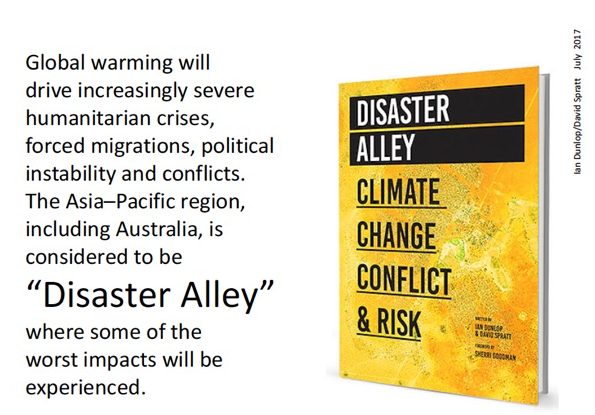Preamble Thank you for the opportunity to make a submission to the Royal Commission into National Natural Disaster Arrangements. The 2019/20 Australian bushfire season was unprecedented in terms of the intensity of the fires, their areal extent and their impact on the Australian community . Initial attribution studies confirm the…
Category: Sustainability

Climate Change: The Fiduciary Responsibility of Politicians & Bureaucrats in the Era of Existential Climate Risks
“Fiduciary: a person to whom power is entrusted for the benefit of another” “Power is reposed in members of Parliament by the public for exercise in the interests of the public and not primarily for the interests of members or the parties to which they belong. The cry ‘whatever it…
Climate & Energy – Appeasement Does Not Work
The current chaos around climate and energy policy brings to mind George Santayana’s caution that: “Those who cannot remember the past are condemned to repeat it”. That is exactly what we are witnessing, albeit with far more profound implications even than the advent of the Second World War. In November…

Australia’s Coal & CSG Delusion
Energy policy is the issue to trump them all. We have already lost several Prime Ministers in its cause, and more will likely walk the plank before commonsense prevails. But the last few weeks have set new standards for national stupidity . The political rhetoric grows ever more florid, starting…

Facing “Disaster Alley”, Australia Shirks Responsibility
The first responsibility of a government is to safeguard the people and their future wellbeing. The ability to do so is increasingly threatened by human-induced climate change, the accelerating impacts of which are driving political instability and conflict globally. Climate change poses an existential risk to humanity which, unless…
Coal Industry – Wrong Way, Go Back!
Coal producers and lobbyists are yet again promoting “clean coal” as the justification for continued expansion of energy coal as we make the inevitable transition to the low-carbon economy. Conscious that they can no longer credibly reject the evidence of accelerating climate change, the Minerals Council of Australia (MCA) and…
Burning the Science Books
Didn’t work then, won’t work now Australia has an enviable reputation for scientific research, extending long before the hey-day of the CSIRO in the 1950s under the visionary leadership of Sir Robert Menzies and Sir Ian Clunies-Ross. On the hottest and driest continent on Earth, our prosperity would be non-existent…

From Global Drivers to Strategic Risks
Since the Industrial Revolution the world has undergone an unprecedented transformation, largely a result of human activity. To the point, as proposed by Paul Crutzen, that we are now arguably in a new geological epoch – the Anthropocene 1, where humanity is the dominant force in world evolution. The changes…
Realism needed on Carbon Capture and Storage
Sequestering say 20% of current global CO2 emissions requires an industry around 170% the size of the world oil industry. Carbon Capture and Storage (CCS) may make a significant contribution to addressing climate change, but: not in the short term, to prevent atmospheric carbon concentrations above 450ppm CO2e not at…
Ian Dunlop at Amplify Festival 2011
The end is nigh! Or is it? Can the carbon tax save us, is there life after oil, what can we do as businesses and individuals to help the cause? A collection of insights from an energy expert with a 30 year career in gas and coal.
